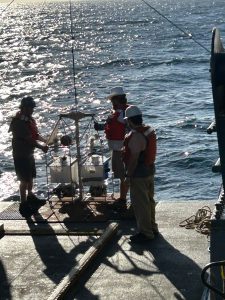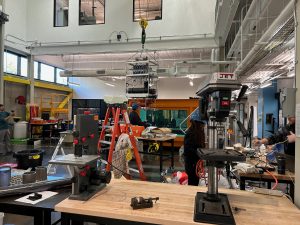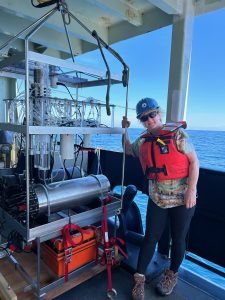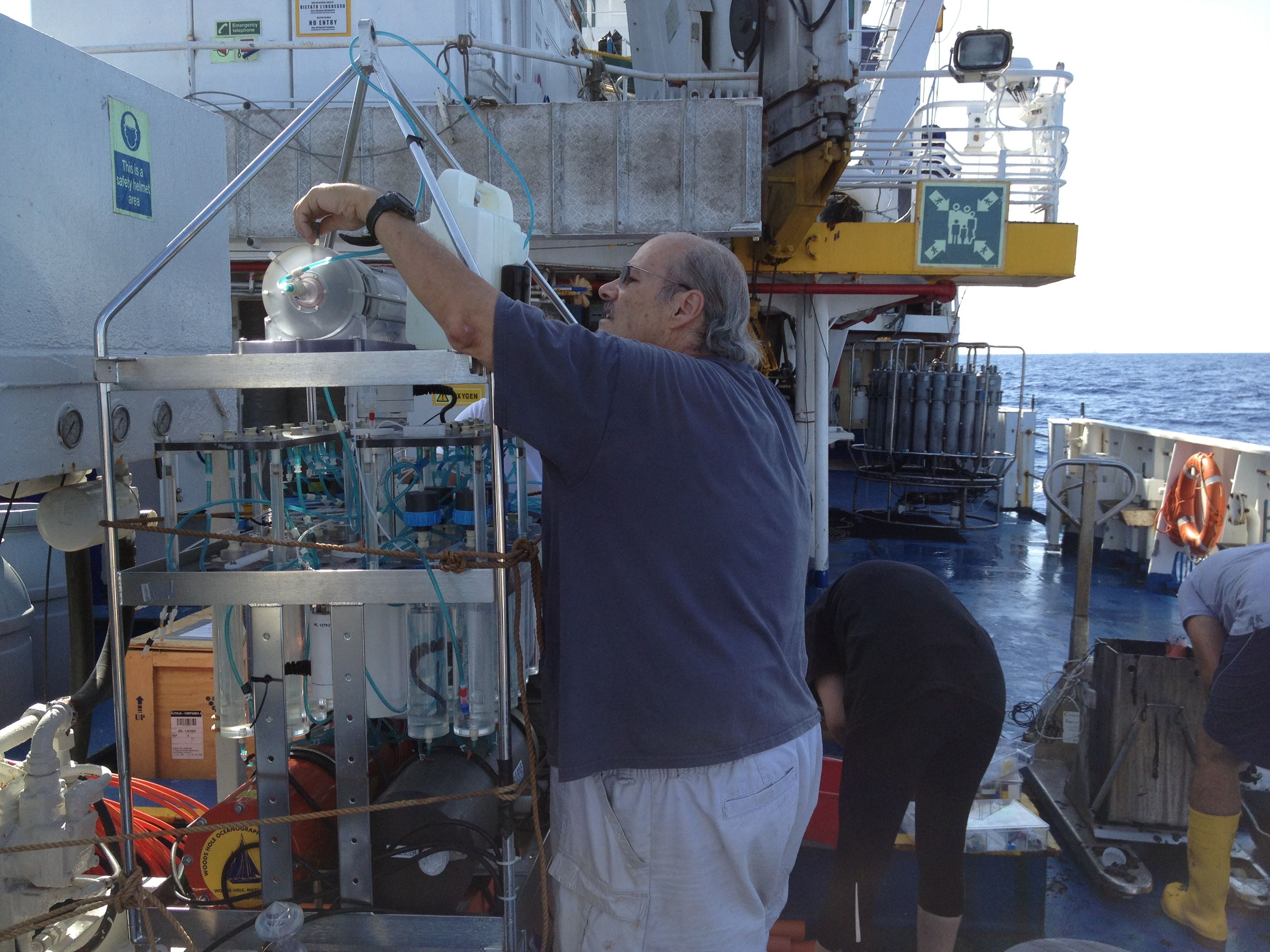Water Column Sampler Development
Most studies of marine microbiology have historically relied on sampling with Niskin bottles mounted on a rosette, that capture water samples from selected positions in the water column. These bottles are returned to the surface where water samples are typically processed by filtering and/or preserving them. The problem with this approach is that many microorganims, particularly protists, do not survive the journey to the surface from positions deep in the water column, and hence, any snapshot of the community is going to be altered to an unknown extent from what it is in situ. This is a particular problem when studying gene expression. Message RNA only lasts seconds to minutes, and the same genes that are expressed in situ are likely not expressed by the time the sample is processed. Cells in bottles that experience significant pressure changes, and perhaps temperature changes and some exposure to oxygen, almost certainly change their gene expression patterns if they are still alive. In collaboration with C. Taylor (WHOI), Laura Bristow and Bo Thamdrup (University of Southern Denmark), Maria Pachiadaki (WHOI), and engineers at WHOI we have developed a new water column sampler, the MS-SID, that can filter and preserve samples in situ, conduct in situ incubation studies, and capture accurate low-oxygen concentration data. This instrument builds on knowledge gained from earlier instrument developments in the SID line at WHOI, and it will help us gain a much better view into in situ activities. This is a significant advance for marine microbiology. We deployed this new instrument for the first time in winter 2023. In addition, we have worked with Bristow and Thamdrup to modify and deploy two incubation instruments to conduct in situ incubation studies of selected microbial activities using stable isotope tracers. These instruments incorporate new highly-sensitive oxygen sensing chemistry developed by Bristow and Thamdrup. The "twins" as these two instruments are called, were deployed successfully on a floating mooring during the R/V Atlantis cruise to the ETNP in 2023. This is an area where we continue to push developments.




